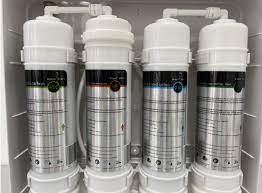Alkalinity Disperser
Alkalinity refers to the capacity of a substance or solution to neutralize acids and maintain a stable pH level. It is a measure of the concentration of alkaline substances, primarily bicarbonates, carbonates, and hydroxides, in a solution. Alkalinity is an important parameter in various fields, including chemistry, environmental science, and water treatment. Here are some key points about alkalinity:


Buffering Capacity:
Alkalinity acts as a buffer, resisting changes in pH when acids are added to a solution. It helps maintain the stability and balance of pH levels in various systems.
Measurement Units:
Alkalinity is typically measured in units of milligrams per liter (mg/L) or parts per million (ppm) of calcium carbonate (CaCO3) equivalent. This unit represents the amount of acid required to neutralize the alkalinity.
Types of Alkalinity:
Alkalinity can be categorized into different types based on the contributing substances:
Alkalinity: It is mainly due to the presence of carbonate ions (CO32-) and bicarbonate ions (HCO3-) in the solution. Carbonate alkalinity is more significant at higher pH values.
Bicarbonate Alkalinity: Bicarbonate ions contribute to bicarbonate alkalinity, which is predominant at moderate pH values.
Hydroxide Alkalinity: Hydroxide ions (OH-) contribute to hydroxide alkalinity, which is more significant at higher pH values.
Sources of Alkalinity:
Alkalinity can originate from various sources, including natural geological processes, such as the dissolution of carbonate rocks, as well as human activities, such as the addition of alkaline substances to water systems or wastewater.
Importance in Water Treatment:
Alkalinity plays a crucial role in water treatment processes. It helps maintain a stable pH in water systems, prevents corrosion of metal pipes and infrastructure, and provides a buffer against acidity caused by natural or man-made factors.
Environmental Impact:
Alkalinity is an essential parameter in assessing the water quality of natural bodies like rivers, lakes, and oceans. It influences the overall health and ecosystem balance by affecting the pH and the availability of nutrients for aquatic organisms.
It’s important to note that specific applications or industries may have their own considerations and methods for measuring and managing alkalinity. Water treatment professionals, environmental scientists, and chemists often monitor and adjust alkalinity levels to ensure optimal performance and compliance with regulations.

